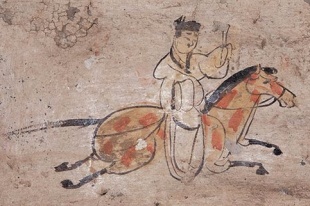Two-way road that led to China


Rong says: "Documents, either in wooden slips or pieces of yellow paper, have been found showing the registration of guests or provision of horse fodder at government-kept relay stations within the Chinese border, mostly in what is now Gansu and Xinjiang Uygur autonomous region. These guest stations were usually located near desert oases or water sources and were often paired with military beacon towers. The Great Wall, ancient China's ultimate defense line against the 'barbarians', were also extended to offer protection."
However, at least one thing has been constant through the history of the Silk Road: change. People-merchants, mercenaries or even marauders-were jostling and squabbling as they were moving. Regimes, from mighty cross-continental empires to agricultural statelets and pastoral tribes, rose and fell. The result is diverse languages, shifting identities, transient policies and changing beliefs, complicated by intrusions and conquests that equally disrupted and facilitated exchanges.
The Silk Road went into relative decline after Tang, although the flow of exchanges on the road never dried up, even in times of war.





































